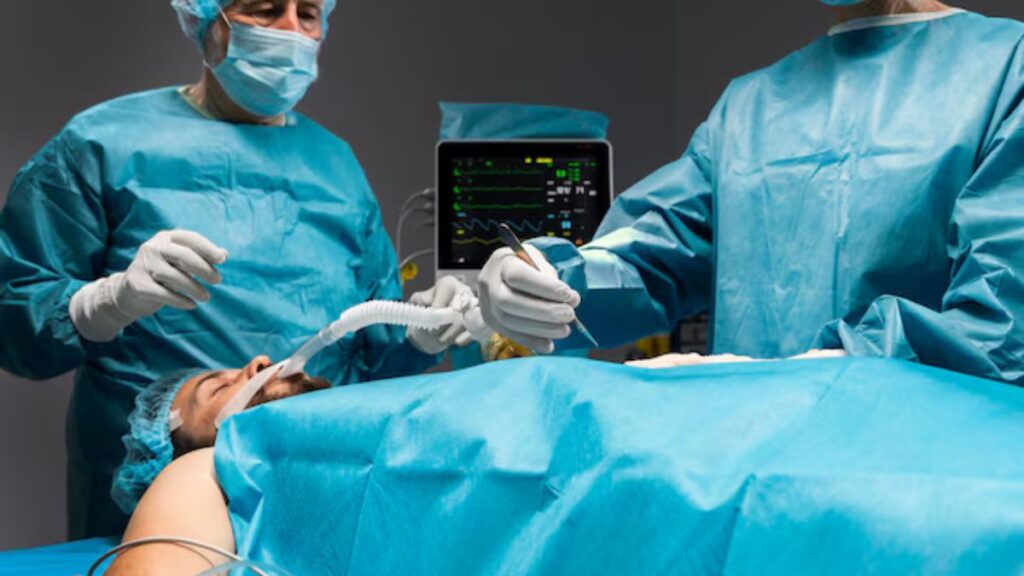Facilities That Use Cutting Edge Medical Technology For Intubation

The delicate balance between life and death often hinges on the simple act of breathing. When illness or injury robs a patient of this fundamental ability, endotracheal intubation – the insertion of a tube into the trachea to secure an airway – becomes a critical intervention. However, traditional intubation methods can be fraught with challenges, leading to complications and potentially devastating outcomes.
Across the globe, a select group of medical facilities are pioneering the use of cutting-edge technologies to transform intubation practices. This article delves into the advanced tools and techniques being deployed, examining their impact on patient safety, efficiency, and the future of airway management.
The rise of advanced intubation technologies is driven by the need to address the inherent difficulties and risks associated with traditional methods. These difficulties include failed intubation attempts, esophageal intubation, and airway trauma.
The Nut Graf: A New Era of Airway Management
While traditional direct laryngoscopy relies on a direct line of sight to visualize the vocal cords, innovations such as video laryngoscopy, fiberoptic bronchoscopy, and artificial intelligence (AI)-assisted intubation are revolutionizing the field. These technologies offer improved visualization, enhanced precision, and the potential to reduce complications, particularly in patients with difficult airways.
The goal is to enhance safety, improve success rates, and minimize the risks associated with this critical procedure.
Video Laryngoscopy: Seeing the Unseen
Video laryngoscopy (VL) has emerged as a game-changer in airway management. By utilizing a video camera attached to a laryngoscope blade, VL provides a magnified and enhanced view of the larynx on a monitor.
This indirect visualization allows clinicians to navigate around anatomical obstructions, reducing the need for excessive force and minimizing the risk of airway trauma. A study published in the journal Anesthesiology found that VL significantly improved intubation success rates compared to direct laryngoscopy, particularly in patients with predicted difficult airways.
Dr. Emily Carter, an anesthesiologist at Massachusetts General Hospital, emphasizes the importance of VL in her practice. "Video laryngoscopy has become an indispensable tool," she explains. "It allows us to intubate patients with complex airway anatomies more safely and efficiently, leading to better patient outcomes."
Fiberoptic Bronchoscopy: Guiding the Way
For particularly challenging airways, fiberoptic bronchoscopy (FOB) provides an even more sophisticated solution. This technique involves inserting a flexible, lighted scope through the nose or mouth, allowing clinicians to directly visualize the airway and guide the endotracheal tube into place.
FOB is especially useful in patients with airway stenosis, tumors, or other conditions that obstruct the vocal cords. It allows for a more controlled and precise intubation, minimizing the risk of complications.
According to the American Society of Anesthesiologists (ASA), FOB is considered the gold standard for managing anticipated difficult airways. Advanced simulation training allows clinicians to become proficient in this technique before encountering real-world scenarios.
AI-Assisted Intubation: The Future is Now
Artificial intelligence (AI) is beginning to play a role in intubation, promising to further enhance safety and efficiency. AI-powered systems can analyze video laryngoscopy images in real-time, providing clinicians with guidance and feedback during the intubation process.
These systems can identify anatomical landmarks, predict the optimal path for tube placement, and alert clinicians to potential complications. Studies are currently underway to evaluate the effectiveness of AI-assisted intubation in improving first-pass success rates and reducing the risk of adverse events.
Researchers at the University of California, San Francisco (UCSF) are developing AI algorithms that can predict difficult intubations based on patient characteristics and pre-operative imaging. "Our goal is to develop a system that can identify patients at high risk for intubation failure before the procedure even begins," says Dr. David Thompson, the lead investigator on the project.
Challenges and Considerations
Despite the significant advancements in intubation technology, challenges remain. The cost of these advanced tools can be prohibitive for some hospitals, particularly in resource-limited settings.
Furthermore, the successful implementation of these technologies requires specialized training and expertise. Some critics also raise concerns about the potential for over-reliance on technology, emphasizing the importance of maintaining fundamental intubation skills.
The World Health Organization (WHO) has called for increased access to essential medical technologies, including advanced airway management devices, in low- and middle-income countries. International collaborations are needed to address the global disparities in access to these life-saving tools.
Looking Ahead: A Vision for Safer Airways
The future of intubation is likely to be characterized by even greater integration of technology. Advances in virtual reality (VR) and augmented reality (AR) are creating new opportunities for training and simulation.
Robotic-assisted intubation systems are also being developed, offering the potential for remote airway management in challenging environments. As technology continues to evolve, the focus will remain on improving patient safety, reducing complications, and ensuring that all patients have access to the best possible airway management.
Ultimately, the goal is to make intubation a safer, more predictable, and more successful procedure for every patient, regardless of their individual circumstances. The pursuit of innovation in airway management is a testament to the dedication of healthcare professionals to improving patient outcomes and saving lives.


